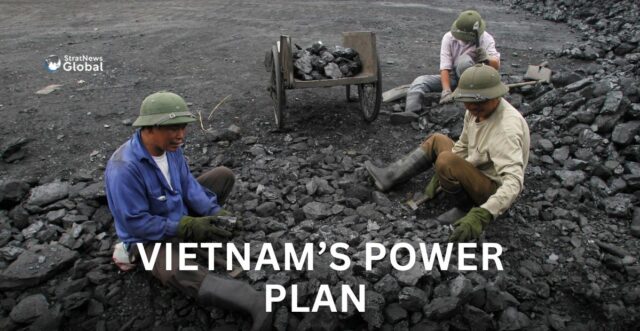Vietnam has lowered its power-production targets for gas and offshore wind this decade, with coal and other renewables expected to fill the gap until nuclear reactors are included to the energy mix by 2035, a draft industry ministry document showed.
No Offshore Wind Project
The document, released late on Tuesday and still subject to changes, aims to replace the 2023 power generation plan for this decade. This comes as the Southeast Asian export hub strives to meet the growing electricity demand from domestic manufacturers and multinationals operating in the country.
Under the revised plan, Vietnam will have no offshore wind project in place this decade, against an initial goal of installing 6 gigawatt (GW) by 2030, which has now been pushed back to 2035, in line with downbeat expectations in the industry.
Imports of LNG, which officials have said are part of ongoing discussions with the U.S. administration to avoid trade tariffs on Vietnam, are set to power production capacity of 18 GW by 2030, down from the 22.4 GW initially planned.
Electricity production from LNG is set to begin this year, with the first power plants expected to come online, contributing a total capacity of 0.8 GW, according to the draft document. Developer PetroVietnam Power said last week two of the first LNG power plants with combined capacity of 1.5 GW will start commercial operations from June.
Supplies of domestic natural gas will support installed capacity of 10.8 GW by 2030, down from the previously planned nearly 15 GW.
Among the reasons for the lowered target are difficulties at Exxon Mobil’s Blue Whale field, off Vietnam’s central coast, the largest in the country, the document said, confirming Reuters’ earlier reports on the matter.
Coal, Renewables Nuclear
The Communist-run country expects to make up for the lost output from gas and offshore wind by boosting capacity to produce electricity from coal, hydropower and other renewables such as solar and onshore wind.
Total capacity is expected to grow to 175 GW by 2030 from the initially planned 150 GW.
To avoid power cuts experienced during a heat wave in 2023, Vietnam boosted its imports of coal last year, and plans to expand its installed capacity by 2030 before shutting down coal plants by mid-century, according to the document.
Coal-fired power plants could generate 31 GW by the end of the decade, up from the initial forecast of 30.1 GW. An additional 7.2 GW in provisional capacity can boost the potential total by over a quarter, making coal the country’s primary energy source.
Solar power capacity is expected to more than double from the current goal to 30.4 GW by 2030.
Nuclear reactors, recently reintroduced into the power mix, are expected to begin operations in 2035, with a target of generating nearly 5 GW by mid-century, the draft showed.
The government said on Tuesday it aims to complete the construction of the country’s first nuclear power plant by the end of 2030.
(With inputs from Reuters)





